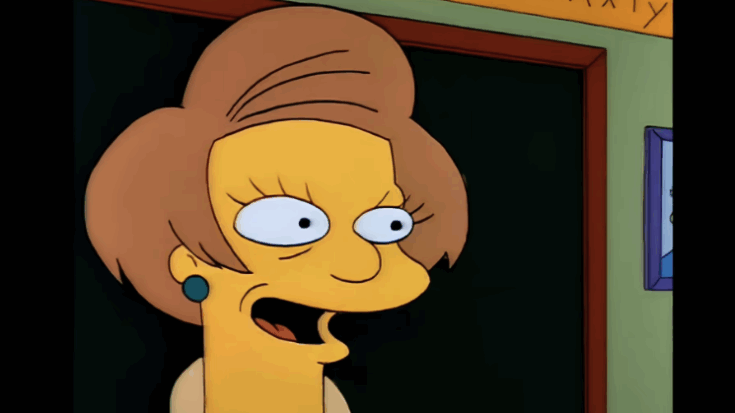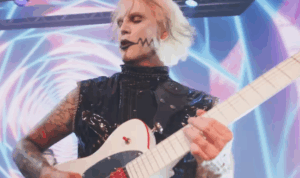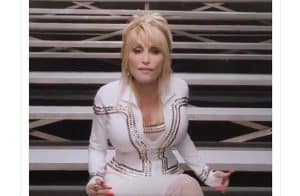TV Characters Who Died Because the Actor Portraying Them Really Died

via TheRealJims / YouTube
Television doesn’t pause for real life, even when real life hits with something no script can soften. Viewers grow attached to the faces they see week after week, and those characters often feel as familiar as the people sitting in the same room. When one of the actors behind those characters passes away, the loss ripples far beyond the set. Writers, castmates, and fans all end up facing a moment they never prepared for.
For decades, the usual solution was simple: hire someone new, keep the storyline intact, and move forward. But modern audiences expect more honesty from the shows they follow. Instead of patching the loss with a recast, many productions choose to acknowledge the truth directly. Saying goodbye on-screen becomes its own form of healing—an attempt to honor the person behind the role rather than pretend nothing happened.
These moments can be heartbreaking, but they often reveal how deeply these performers connected with the people who watched them. The tributes written into the episodes aren’t just plot decisions; they’re part of the grieving process for everyone involved. In the sections that follow, we look at TV characters whose stories ended because the actors who brought them to life left too soon.
1. Mr. Hooper’s Farewell Became One of Sesame Street’s Most Honest Moments
For many kids in the ’70s and early ’80s, Mr. Hooper felt as steady and familiar as any grown-up in their own neighborhood. He wasn’t just the man behind the counter at Hooper’s Store—he was part of the show’s emotional backbone, greeting monsters and humans with the same warm patience. His scenes often grounded the sillier moments, adding a gentle, lived-in quality to the block everyone wished they could visit.
Behind that beloved shop apron was Will Lee, whose death in 1982 left the show’s producers with a decision they’d never faced before. They could have quietly written Mr. Hooper into a sunny retirement, letting him disappear offscreen without explanation. That was the standard TV approach at the time, but it didn’t sit right with a team dedicated to teaching real life, even when real life wasn’t easy.
Instead, they took a brave step for children’s television: they acknowledged the truth. An entire episode was dedicated to explaining his passing in a way kids could understand. It was tender, direct, and respectful, and it gave families a way to talk about loss together. That choice earned “Sesame Street” not only a Peabody Award, but also a permanent place in TV history for handling grief with rare clarity.
2. Coach’s Absence Left a Quiet Ache at the Bar on Cheers
When “Cheers” first premiered, Coach Pantusso quickly became one of the show’s biggest hearts. His wide-eyed confusion, gentle humor, and unwavering kindness made him an immediate favorite among viewers. He wasn’t written as a wise mentor so much as a sweet, slightly baffled uncle figure whose presence softened every scene he was in.
Nicholas Colasanto, who played Coach, passed away unexpectedly before filming began on Season 4. The cast and crew had no intention of trying to replace his energy with another actor in the same role. Instead, they folded the reality of his passing into the show, offering a simple acknowledgment that Coach had died without diving into heavy details. It gave room for both the characters and the audience to feel the absence naturally.
Woody Harrelson’s arrival as Woody Boyd helped fill the ensemble gap, but the spirit Coach brought to the bar never fully left. One of the most touching tributes came years later in the series finale, when Sam quietly straightened a portrait of Geronimo. That piece had belonged to Colasanto and hung in his dressing room, a small reminder of how deeply he shaped the show’s early years.
3. Bill McNeal’s Exit Reflected the Heartbreak Behind Phil Hartman’s Loss
Phil Hartman had a way of elevating every project he touched, whether he was voicing a self-absorbed B-movie actor on “The Simpsons” or anchoring sketches on “SNL.” His role as Bill McNeal on “NewsRadio” showcased his sharp timing and cool, unflappable delivery, painting a picture of a newsman who adored his own legend more than the job itself. Hartman’s sudden death in 1998 devastated fans and colleagues alike.
When the show returned, the writers chose to honor him with the same grace and humor that marked his career. Bill McNeal was written as having died of a heart attack offscreen, giving the cast a chance to process their grief within the storyline. The episode struck a delicate balance—mourning the loss without drifting into sentimentality, acknowledging the pain while still reflecting the show’s comedic voice.
Jon Lovitz joined the cast the following week as Max Louis, stepping into the ensemble without trying to replace Hartman’s energy. His presence helped steady the show during a difficult transition, but nothing diminished the impact Hartman had left. Bill McNeal’s departure remains one of the most thoughtfully handled TV farewells of its era.
4. Paul Hennessy’s Sudden Death Redefined 8 Simple Rules
John Ritter had already secured his place in sitcom history long before 8 Simple Rules arrived, but the series gave him a chance to connect with a new generation of viewers. As Paul Hennessy, he played a well-meaning father determined to steer his teenage daughters through the chaos of dating—often with mixed results and plenty of heart. His comedic instincts made every episode feel effortless.
His unexpected death in 2003 stunned both the industry and the fans who had welcomed him back onto weekly television. Ritter had completed several episodes of the new season when he died of an aortic dissection, forcing the show to confront a loss far bigger than any plot twist. Production paused as everyone involved tried to absorb what had happened.
When the series resumed, it chose to address his death directly. Paul’s passing was handled with tenderness, allowing the characters to grieve the person at the center of their family. The show’s title was shortened, and James Garner joined as the grandfather stepping in to support the household. Ritter’s absence reshaped the entire series, leaving behind a legacy of warmth that carried through every remaining episode.
5. Leo McGarry’s Final Arc Shifted The West Wing’s Ending
Across six seasons of The West Wing, Leo McGarry became one of the show’s emotional anchors. As the president’s chief of staff, he brought quiet authority, deep loyalty, and a steadying presence to a West Wing filled with idealism and turmoil. John Spencer played him with a mix of gravitas and vulnerability that made Leo feel indispensable—not just to the fictional White House, but to the audience.
Spencer died of a heart attack in 2005 while Season 7 was still filming, just as Leo was running for vice president alongside Matt Santos. His passing forced the writers into a painful creative pivot. They had mapped out the election storyline, but suddenly they had to rethink how to honor both the character and the actor without overwhelming the series’ final stretch.
Leo’s death was written into the campaign, with the news breaking on election night. That shift altered the emotional tone of the final episodes and reshaped the show’s originally planned ending. Whether the election results were changed because of Spencer’s death is still debated by the creative team, but they all agree on one thing: continuing without him wasn’t an option. His presence had shaped the show too deeply to ignore.
6. Andrew Campbell’s Death Reflected a Real Tragedy Behind the Scenes of Mad Men
Christopher Allport’s time on Mad Men was brief, but his portrayal of Andrew Campbell left a strong imprint on Pete’s early storyline. As Pete’s stern, icy father, he brought a tension that shaped the younger Campbell’s insecurities and impulsive career choices. Even though Allport appeared in only a single episode, the emotional weight he carried lingered well into later seasons.
Offscreen, Allport sustained a long career built on consistency rather than celebrity. He worked steadily for decades, turning up in films, dramas, and genre shows with an ease that made him a familiar face even when viewers couldn’t name him outright. His sudden death in early 2008, when an avalanche struck in the San Gabriel Mountains, shocked colleagues and fans alike. It was the kind of loss that felt both random and deeply unfair.
When Mad Men returned, the writers chose to weave Allport’s real-life passing into the show’s tightly researched 1960s world. Andrew Campbell was said to have died in the crash of American Airlines Flight 1, a true historical tragedy from 1962. It allowed the series to honor Allport in a way that suited the show’s tone—quiet, understated, and rooted in the bleak realities that shaped the lives of its characters.
7. Edna Krabappel’s Exit Honored a Beloved Voice on The Simpsons
Marcia Wallace brought a sharp wit and weary charm to Edna Krabappel for more than two decades, turning Springfield’s most exhausted teacher into a quietly iconic figure. Before The Simpsons, Wallace had already built a long résumé, including her memorable run on The Bob Newhart Show and countless appearances across television. Her voice was instantly recognizable, capable of warmth, sarcasm, and heartbreak in a single breath.
Wallace passed away in 2013 at age 70, leaving behind a character that had become a cornerstone of the show’s emotional texture. Unlike live-action sitcoms, animated series can easily continue a character’s presence with another performer. But in this case, the creators made a different choice. Edna Krabappel wasn’t recast—not even for a brief transitional storyline. The role was retired entirely as an act of respect for the actress who had defined her.
The show acknowledged Wallace’s passing with a touching tribute card, featuring Ned Flanders and Edna in happier moments. Later, an episode gently referenced Edna’s death, bringing quiet closure without forcing the audience into a heavy-handed farewell. It was a soft, sincere goodbye to a character who had shaped Springfield for so long.
8. Owen Granger’s Storyline Shifted as NCIS: Los Angeles Lost Miguel Ferrer
Miguel Ferrer had one of those careers that threaded its way through every corner of film and television. From his striking performance in RoboCop to long stints on Crossing Jordan and a rich line of voiceover roles, he became known for intensity, grit, and a perfectly honed deadpan. By the time he joined NCIS: Los Angeles as Assistant Director Owen Granger, he brought with him decades of experience and an undeniable presence.
Ferrer’s battle with throat cancer played out quietly behind the scenes, even as the show subtly folded his character’s declining health into the storyline. Granger’s mysterious injuries and sudden absences were written as lingering effects from his past—an echo of real tension the cast and crew already understood. In January 2017, Ferrer passed away, leaving the writers with a character whose arc was already leaning toward farewell.
Within the show, Granger first slipped out of the narrative to handle unfinished personal business. Later, it was revealed that he had died peacefully under a tree, finally confronting regrets tied to his daughter’s past. It was a gentle, reflective ending that suited the complicated man Ferrer had brought to life, and it allowed fans to say goodbye without sensationalizing the loss.
9. Finn Hudson’s Memorial Episode Became Glee’s Most Emotional Moment
Cory Monteith entered Glee with a mix of charm and quiet vulnerability that made Finn Hudson impossible to resist. He wasn’t the polished singer his character pretended to be, but his sincerity anchored the show’s early seasons. Monteith had already appeared in several Canadian and American TV roles, yet it was Glee that transformed him into a household name.
Off camera, he struggled with substance use for much of his young life, speaking openly about rehab and recovery long before celebrity confessions became a media cycle. In July 2013, Monteith was found dead in a Vancouver hotel room, the result of a heroin and alcohol overdose. His death stunned fans and castmates, many of whom had grown close to him during the show’s rapid rise to fame.
When Glee returned, it devoted an entire episode—“The Quarterback”—to honoring both the character and the man. The script avoided explaining how Finn died, choosing instead to focus on grief, memory, and the ways people hold on to someone after they’re gone. It became one of the series’ most powerful hours, anchored by raw performances from a cast mourning a friend in real time.
10. Debbie Wolowitz’s Passing Gave Big Bang Theory Fans an Unexpectedly Heartfelt Goodbye
Carol Ann Susi’s face rarely appeared on screen in The Big Bang Theory, but her voice was unforgettable. As Debbie Wolowitz, she delivered booming, comedic tirades from offstage that helped define Howard’s upbringing and powered some of the show’s funniest running jokes. Before that, Susi enjoyed a wide-ranging career across TV and film, dating back to her early role on Kolchak: The Night Stalker.
Her death in 2014 brought an abrupt end to a character who had become part of the show’s comedic fabric. Because Mrs. Wolowitz was never seen, the writers had the option of quietly recasting the voice. Instead, they chose to write her death into the storyline, giving the character a farewell that acknowledged her importance despite her physical absence.
The show explored her passing across several episodes, weaving humor and sadness in the way The Big Bang Theory did at its best. A funeral was held offscreen, her ashes briefly misplaced by an airline, and Howard found comfort in discovering one final homemade meal waiting in her freezer. It was a surprisingly tender sendoff for a character the audience knew only by sound.
11. Dr. Kroger’s Death Marked a Turning Point in Monk’s Later Seasons
For six seasons of Monk, Dr. Charles Kroger was more than a therapist—he was the calm, grounding force Adrian Monk depended on to navigate a world that overwhelmed him at every turn. Stanley Kamel played the role with a gentle steadiness that balanced the show’s eccentric humor, often guiding Monk toward clarity without ever realizing he was nudging the detective closer to solving a case. His office became one of the show’s emotional anchors, a place where Monk could unravel safely.
Kamel’s sudden passing from a heart attack in April 2008 left the show without one of its most reassuring voices. When Season 7 began, the writers chose to acknowledge the loss directly. Monk walked into his therapist’s office only to learn that Dr. Kroger had died offscreen, mirroring the shock Kamel’s colleagues felt in real life. It was one of the few moments in the series where Monk’s grief wasn’t connected to a mystery—just the simple pain of losing someone he trusted.
The show introduced Dr. Neven Bell, played by Héctor Elizondo, to help Monk continue his therapy, but Dr. Kroger’s absence remained a quiet ache throughout the remaining episodes. In a gesture of respect, the cast and crew filmed a public service announcement about heart health, turning their own grief into something that might help others. It was a thoughtful way to honor a performer who had meant so much to the show.
12. Judge Happy Boyle’s Creative Sendoff Showed Ally McBeal’s Unique Humor
Phil Leeds was the kind of performer audiences recognized even when they couldn’t place his name. His career stretched from the streets of New York to decades in film and television, punctuated by a blacklist that stalled him but didn’t sink him. In his later years, he found a home on Ally McBeal as Judge Dennis “Happy” Boyle, a quirky presence who fit right in with the show’s offbeat rhythm.
When Leeds died in 1998, the series faced the challenge of saying goodbye to a character closely tied to the show’s tone. Rather than write a somber farewell, the production team crafted something uniquely fitting: a “patchwork scene” built from unused footage, edited to portray the judge nodding off in court before being declared dead. It was odd, funny, and strangely affectionate—a tribute that matched the old Catskills comic they had lost.
The moment landed because it didn’t shy away from Leeds’ comedic legacy. By stitching together a final scene from what they already had, the show acknowledged both the limitations of TV production and the enduring impact of a performer who made every role feel lived in. It was an unconventional goodbye, but one that felt unmistakably his.
13. Ella Mae Farmer’s Death Reflected the Real Loss of Lynne Thigpen
Lynne Thigpen’s sharp voice and commanding presence made her unforgettable to anyone who grew up yelling answers at Where in the World Is Carmen Sandiego? as she barked instructions into the camera. Her career spanned far beyond children’s television, though, and by the early 2000s she was bringing her authority and warmth to The District as Ella Mae Farmer, an essential member of the crime-fighting team.
Her sudden death in 2003 from a cerebral hemorrhage stunned viewers and the cast alike. Thigpen had been a central figure on the show, someone whose steadiness balanced the procedural tension. The writers chose to address her passing directly, mirroring the cause of her real-life death within the storyline. It offered a way for both characters and viewers to confront the loss honestly.
The decision also allowed the show to honor Thigpen without softening the blow. Ella Mae Farmer’s absence created a noticeable shift in tone, one that underscored just how deeply the actress had shaped the series. For many fans—especially those who grew up with her earlier work—her death marked the end of a familiar, reassuring voice in television.
14. Barry Frost’s Farewell in Rizzoli & Isles Carried Real-Life Grief
Lee Thompson Young packed an impressive amount of work into a career that began when he was still a teenager. Audiences first embraced him as Jett Jackson, and he later showed surprising range in projects like Smallville and Akeelah and the Bee. On Rizzoli & Isles, he played Barry Frost, a soft-spoken, tech-savvy detective who balanced the harder edges of the show’s main duo.
Offscreen, Young battled depression and bipolar disorder, struggles he kept largely private. When he died by suicide in 2013 at age 29, the news shook the entertainment world. Production halted as cast and crew mourned a colleague they cared for deeply. The character of Frost couldn’t simply disappear from the narrative without acknowledgment—the show needed space to process the loss.
When the series returned, it wrote Frost’s death into the storyline through a car accident. The episode dealing with his passing was somber, quiet, and respectful, giving viewers a chance to grieve alongside the characters. It wasn’t just a plot adjustment—it was a farewell to an actor whose talent promised so much more.
15. Gramps’ Death on Lassie Broke Ground for Family TV
George Cleveland came from the era when performers had to master everything from vaudeville to radio before making it onto television. By the time he joined Lassie, he had already built a long and varied career, and his portrayal of Gramps brought warmth and stability to one of the most family-friendly shows of the 1950s. He felt like the kind of grandfather every kid wished they had.
Cleveland’s death from a heart attack in 1957 placed the show in uncharted territory. No family series at the time had ever depicted the death of a major character onscreen, and network executives were nervous about the emotional risks. Writers, producers, sponsors, and even child psychologists weighed in, each with strong opinions about how far the show could go while still being appropriate for young viewers.
Ultimately, the creators refused to sidestep the truth. Gramps’ passing became part of the storyline, handled with care but without euphemisms. The episode aired despite pushback, marking one of the earliest attempts in family television to deal with death honestly. It was a bold decision for its time—and a meaningful one for the children who watched it.
16. The Brigadier’s Off-Screen Goodbye Reflected Doctor Who’s Long History
Brigadier Alistair Gordon Lethbridge-Stewart wasn’t just another recurring character on Doctor Who—he was a fixture of the series’ lore. Played by Nicholas Courtney across decades, he appeared in more than 100 episodes and extended the Brigadier’s presence into radio dramas, spinoffs, and comics. He served as both ally and foil to multiple Doctors, grounding their chaos with military crispness and steady humor.
Courtney’s death in 2011 brought an end to an era for a franchise that rarely stops long enough to acknowledge the passage of time. His last on-screen appearance had come a few years earlier on The Sarah Jane Adventures, but the Brigadier’s legacy was still woven into the show’s fabric. The writers chose a simple, understated approach: during a climactic moment in Series 6, the Doctor calls a care facility only to learn that his old friend has passed away.
It was a rare pause in a story built on the idea that time can be rewritten. Two seasons later, the Brigadier received a final nod, and his daughter Kate Stewart stepped forward as a recurring character, carrying the mantle in her own way. It was a gentle way of letting the Brigadier live on, even as the man who played him could not.
17. Sam Noonan’s Death Closed a Long Chapter on Gunsmoke
Glenn Strange had one of those careers that stretched across Hollywood’s most transformative decades. Before he ever stepped behind the bar on Gunsmoke, he spent years in Westerns and B-movies and famously played Frankenstein’s monster in several Universal films. His look became so tied to the creature that newspapers once misidentified him in Boris Karloff’s obituary.
By the time he joined Gunsmoke, Strange was a veteran, bringing a calm, easy presence to his role as Sam Noonan. For more than a decade, Sam served drinks, listened to troubles, and contributed to the steady rhythm that made the show feel like a real community. Strange appeared in over 200 episodes, earning his place as one of Dodge City’s most familiar faces.
When Strange died of cancer in 1973, the show chose to let Sam go with him. There was no attempt at recasting or quietly rewriting his disappearance. After so many years spent behind that bar, the character’s death marked the end of something steady and comforting—even in a series that had weathered every kind of trouble the Old West could offer.
18. The First Master’s Death Shaped Doctor Who’s Villain Lore
Roger Delgado’s arrival on Doctor Who in the early 1970s instantly changed the show’s dynamic. As the Master, he played the Doctor’s equal and opposite: sharp, theatrical, and endlessly menacing. His goatee, his charm, and his unshakeable confidence made him the kind of villain who could steal a scene simply by raising an eyebrow.
Delgado became a fan favorite almost immediately, appearing in multiple serials and giving the show a more personal adversary than any alien invasion could offer. His performances were consistently memorable—full of sly humor and genuine danger. But in 1973, Delgado was killed in a car accident while filming a project in Turkey. His sudden death cut short plans for a major confrontation between the Doctor and the Master.
The character was eventually written to “die” onscreen before regenerating into a new form, a transition that reflected both the show’s mythology and the real loss behind the scenes. Delgado’s incarnation remains beloved, and many fans still regard him as the definitive Master—the one who established the template for every version that followed.
19. Richard Gilmore’s Off-Screen Passing Anchored Gilmore Girls: A Year in the Life
Edward Herrmann gave Richard Gilmore both dignity and warmth, portraying a man whose strict expectations clashed with his deep affection for his family. Over seven seasons of Gilmore Girls, he became one of television’s most reliably nuanced father figures, balancing stern lectures with quiet, genuine love. His presence added weight to the show’s emotional center.
Herrmann died in 2014 after being diagnosed with brain cancer, leaving a gap that could not be filled when Netflix revived the series two years later. The creators chose not to sidestep his absence. Instead, they made Richard’s recent death a central element of A Year in the Life, tying it back to the heart issues hinted at in the original run.
His passing became the axis around which the revival turned, shaping Emily’s grief, Lorelai’s introspection, and even Rory’s stalled direction. It gave the sequel a sense of realism and emotional grounding, acknowledging that time had moved forward not only for the audience, but for the characters who had always felt so familiar.
20. Riverdale’s Tribute to Fred Andrews Became One of Its Most Grounded Episodes
Luke Perry brought a sincerity to Fred Andrews that often steadied Riverdale’s most chaotic impulses. While the show veered into murder plots, cults, and surreal narratives, Fred remained the moral compass—a quietly loyal father who seemed pulled from a much gentler story than the one unfolding around him. Perry’s presence gave the series its heart.
His death in 2019 from a massive stroke shocked the entertainment world. At the time, Riverdale was still filming its third season, and the writers temporarily explained Fred’s absence as a business trip. But they knew the character—and the actor—deserved a meaningful goodbye. When the show returned in the fall, the premiere episode became a tribute to Perry himself.
Fred Andrews was written as having died in a hit-and-run accident while helping a stranger. The episode set aside the show’s usual stylized chaos for something quieter and more honest, allowing fans and castmates to grieve alongside one another. It was a rare moment when Riverdale paused its wild pacing to honor the real world in the most genuine way it could.











